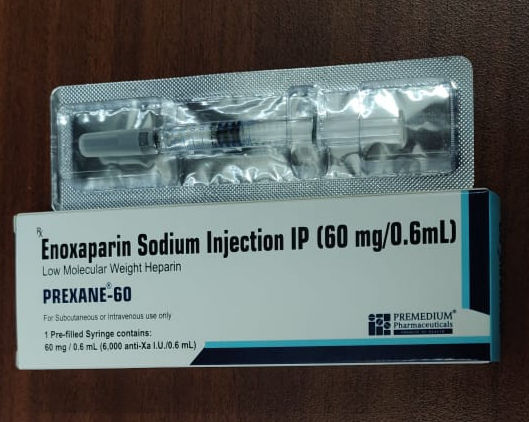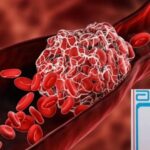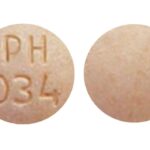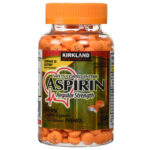Prexane: Uses, Dosage, Side Effects, Interactions

Prexane is a brand of Enoxaparin, a medication used to prevent blood clots in the leg in patients who are on bed rest or who are having a hip replacement, knee replacement, or stomach surgery. It is used in combination with aspirin to prevent complications from angina (chest pain) and heart attacks. It is also used in combination with warfarin to treat blood clots in the leg. Enoxaparin is in a class of medications called low molecular weight heparins. It works by stopping the formation of substances that cause clots.
How should Prexane be used?
Prexane comes as an injection in a syringe (40mg and 60mg) to be injected just under the skin (subcutaneously) but not into your muscle. It is usually given twice a day. You will probably begin using the drug while you are in the hospital and then use it for a total of 10 to 14 days. Follow the directions on your prescription label carefully, and ask your doctor or pharmacist to explain any part you do not understand. Use enoxaparin exactly as directed. Do not inject more or less of it or inject it more often than prescribed by your doctor.
Continue to use Prexane even if you feel well. Do not stop taking enoxaparin without talking to your doctor.
Your healthcare provider will teach you how to give yourself the shot or arrangements will be made for someone else to give you the shot. Enoxaparin is usually injected into the stomach area. You must use a different area of the stomach each time you give the shot. If you have questions about where to give the shot, ask your healthcare provider. Each syringe has enough drug in it for one shot. Do not use the syringe and needle more than one time. Your doctor, pharmacist, or health care provider will tell you how to dispose of used needles and syringes to avoid accidental injury. Keep syringes and needles out of reach of children.
To inject Prexane, follow these instructions:
1. Wash your hands and the area of skin where you will give the shot.
2. Look at the syringe to be sure the drug is clear and colorless or pale yellow.
3. Take the cap off the needle. Do not push any air or drug out of the syringe before giving the shot unless your healthcare provider tells you to.
4. Lie down and pinch a fold of skin between your finger and thumb. Push the entire needle into the skin and then press down on the syringe plunger to inject the drug. Hold onto the skin the entire time you give the shot. Do not rub the site after you give the shot.
What happens if I miss a dose?
Use the medicine as soon as you can, but skip the missed dose if it is almost time for your next dose. Do not use two doses at one time.
What happens if I overdose?
Seek emergency medical attention or call the Poison Help line at 1-800-222-1222. Overdose may cause excessive bleeding.
What are the side effects of Prexane?
Prexane injectable solution may cause pain or bruising of the skin at the site of the injection. This may be more likely when you first start taking the drug, or when your doctor increases your dose. This drug may also cause other side effects.
More common side effects
The more common side effects of enoxaparin can include:
• bleeding
• anemia (not having enough healthy red blood cells)
• pain and bruising at the site on your skin where you give the injection
• fever
• swelling in your legs
If these effects are mild, they may go away within a few days or a couple of weeks. If they’re more severe or don’t go away, talk to your doctor or pharmacist.
Serious side effects
Call your doctor right away if you have serious side effects. Call 911 if your symptoms feel life-threatening or if you think you’re having a medical emergency. Serious side effects and their symptoms can include the following:
• Rebound stroke. This is a stroke that can happen once you stop taking this drug. Symptoms can include:
o trouble speaking or understanding
o loss of control or numbness in your face, arms, or legs
o trouble seeing out of one or both of your eyes
o headache
o trouble walking
• Bleeding. Symptoms can include:
o abdominal pain
o black or tarry stool
o nosebleeds
o bleeding gums
o coughing up blood
o bruising more easily than normal
o bloody vomit
• Rebound blood clots. These blood clots can happen once you stop taking this drug. Symptoms can include:
o chest pain
o trouble breathing
o warmth, redness, or swelling in your arms or legs
What drugs may interact with Prexane?
Prexane injectable solution can interact with other medications, vitamins, or herbs you may be taking. An interaction is when a substance changes the way a drug works. This can be harmful or prevent the drug from working well.
To help avoid interactions, your doctor should manage all of your medications carefully. Be sure to tell your doctor about all medications, vitamins, or herbs you’re taking. To find out how this drug might interact with something else you’re taking, talk to your doctor or pharmacist.
Taking Prexane with certain medications raises your risk of side effects. This is because enoxaparin and these other medications can cause the same side effects. As a result, these side effects can be increased. Examples of these drugs include:
• Nonsteroidal anti-inflammatory drugs (NSAIDs), such as aspirin, ibuprofen, or naproxen. These drugs can decrease your platelets. If you take them with enoxaparin, this puts you at higher risk for bleeding.
• Platelet inhibitors, such as clopidogrel, prasugrel, ticagrelor, or dipyridamole. These drugs can decrease your platelets. If you take them with enoxaparin, this puts you at higher risk for bleeding.
• Herbal supplements, such as ginkgo Biloba, fish oil, garlic, ginseng, and ginger. These supplements can decrease your platelets. If you take them with Prexane, this puts you at higher risk for bleeding.





